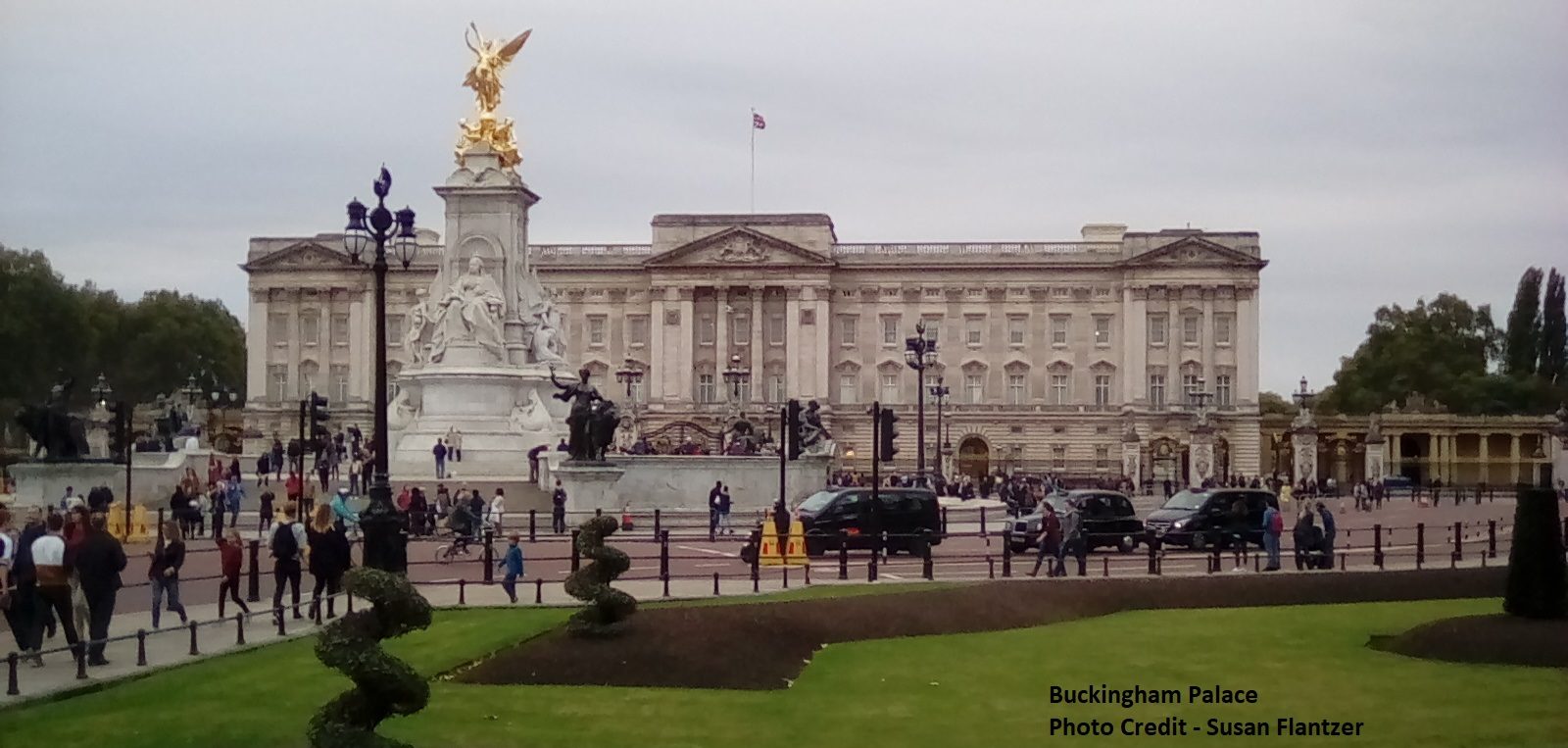© Unofficial Royalty 2025

Wilhelm, German Crown Prince and Crown Prince of Prussia; Credit – Wikipedia
July 20, 1346 – Birth of Margaret of Windsor, Countess of Pembroke, daughter of King Edward III of England, at Windsor Castle in Windsor, England
In 1359, 11-year-old Margaret married 12-year-old John Hastings, 2nd Earl of Pembroke. After their marriage, Margaret and her husband John remained at the royal court. Sadly, 15-year-old Margaret, Countess of Pembroke, died unexpectedly, sometime after October 1, 1361, the last date there is a record that she was living. John Hastings, 2nd Earl of Pembroke, was in royal service for the rest of his short life, mostly as a military commander. He died in 1375 at the age of 27.
Unofficial Royalty: Margaret of Windsor, Countess of Pembroke
July 20, 1524 – Death of Claude of France, Duchess of Brittany, Queen of France, first wife of King François I of France and eldest daughter of King Louis XII of France and his second wife Anne, Duchess of Brittany in her own right at the Chateau de Blois in Blois, France; buried at Basilica of St. Denis near Paris, France
Because her parents had no sons, Claude was the heir to her mother’s Duchy of Brittany, and she succeeded her mother upon her death. François, Count of Angoulême (the future King François I of France) became the heir presumptive to the French throne and remained the heir throughout Louis XII’s reign due to his lack of sons. In 1514, François and Claude were married, and in 1515, Claude’s father, Louis XII died, and her husband succeeded as King François I of France. Queen Claude, Duchess of Brittany died at the age of 24. It is suspected that Claude had tuberculosis and contracted syphilis from her husband, and certainly seven pregnancies in eight years weakened her health.
Unofficial Royalty: Claude of France, Duchess of Brittany, Queen of France
July 20, 1649 – Birth of William Bentinck, 1st Earl of Portland, favorite of King William III of England, born Hans Willem Bentinck in Diepenheim, Overijssel, Dutch Republic, now in the Netherlands
Bentinck and his first wife, Anne Villiers, are ancestors of Queen Elizabeth II of the United Kingdom through her mother’s family, specifically through her maternal grandmother, Cecilia Cavendish-Bentinck. In 1664, fifteen-year-old Bentinck came to the court of fourteen-year-old Willem III, Prince of Orange, the future King William III of England, as a page. In 1672, Bentinck became Willem III’s chamberlain. Bentinck was an important advisor to Willem III and also had a military career. Bentinck played a key role in the planning and execution of the Glorious Revolution of 1688, which resulted in deposing Willem’s uncle and father-in-law King James II of England, and Willem and his wife and first cousin becoming King William III and Queen Mary II of England. Bentinck went to England with William and Mary and was generously rewarded for his service with titles and estates. He remained William III’s closest advisor until William III’s death. When William III’s wife Mary II died from smallpox, it was Bentinck who carried the nearly insensible William from the room. When William III was on his deathbed, he beckoned Bentinck to his bedside. Bentinck bent down and put his ear to William’s mouth, but could only distinguish a few words of William’s incoherent speech. William then took Bentinck’s hand and placed it against his heart. Then William’s head fell back, he closed his eyes, took two or three breaths, and died.
Unofficial Royalty: William Bentinck, 1st Earl of Portland, favorite of King William III of England
July 20, 1835 – Birth of Adelheid of Hohenlohe-Langenburg, Duchess of Schleswig-Holstein, wife of Friedrich VIII, Duke of Schleswig-Holstein, in Langenburg, Principality of Hohenlohe-Langenburg, now in Baden-Württemberg, Germany
Full name: Adelheid Victoria Amalie Louise Maria Konstanze
Adelheid’s mother was Princess Feodora of Leiningen, the elder half-sister of Queen Victoria, and therefore Adelheid was Queen Victoria’s niece. In 1856, Adelheid married the future Friedrich VIII, Duke of Schleswig-Holstein. They had seven children, including Princess Auguste Viktoria, who married Wilhelm II, German Emperor and King of Prussia.
Unofficial Royalty: Adelheid of Hohenlohe-Langenburg, Duchess of Schleswig-Holstein
July 20, 1859 – Birth of Prince Adolf of Schaumburg-Lippe, first husband of Princess Viktoria of Prussia, daughter of Friedrich II, German Emperor, King of Prussia and granddaughter of Queen Victoria, at Schloss Bückeburg in Bückeburg, Principality of Schaumburg-Lippe, now in Lower Saxony, Germany
Full name: Adolf Wilhelm Viktor
In 1890, Prince Adolf married Princess Viktoria of Prussia, known as Moretta, daughter of Friedrich III, German Emperor and Victoria, Princess Royal. After an extended honeymoon in Egypt and Greece, the couple lived in the Palais Schaumburg in Bonn. Moretta had a miscarriage early in the marriage, and the couple remained childless. Following the death of Woldemar, Prince of Lippe in 1895, Prince Adolf became the Regent for Woldemar’s successor and brother, Alexander, who was mentally incapacitated. Adolf served as Regent until 1897, when Count Ernst of Lippe-Biesterfeld replaced him.
Unofficial Royalty: Prince Adolf of Schaumburg-Lippe
July 20, 1927 – Death of King Ferdinand I of Romania at Pelisor Castle in Sinaia, Romania; buried at the Cathedral of Curtea de Arges in Romania
Ferdinand’s uncle, King Carol I of Romania, had no sons to inherit the throne, and so the succession passed to his younger brother Leopold, Ferdinand’s father. When Leopold and his eldest son renounced their rights, Ferdinand became heir-presumptive to the Romanian throne and succeeded to the throne in 1914. Ferdinand married Princess Marie of Edinburgh, daughter of Prince Alfred, Duke of Edinburgh (and later Duke of Saxe-Coburg and Gotha) and Grand Duchess Maria Alexandrovna of Russia, and a granddaughter of Queen Victoria. The couple officially had six children, however, the two youngest children are believed to have been fathered by Marie’s lover but were formally acknowledged by Ferdinand as his own.
Unofficial Royalty: King Ferdinand I of Romania
July 20, 1933 – Death of Elisabeth of Anhalt, Grand Duchess of Mecklenburg-Strelitz in Neustrelitz in Mecklenburg-Vorpommern, Germany; buried in the New Crypt at the Johanniterkirche in Mirow in Mecklenburg-Vorpommern, Germany
Elisabeth married the future Grand Duke Adolf Friedrich V of Mecklenburg-Strelitz. Elisabeth used her public profile to bring attention to the causes near her heart, including nature and flowers. Following her husband’s death in 1914, she remained the first lady of Mecklenburg-Strelitz during the reign of her unmarried son and became very active with the Red Cross during World War I. Remaining active right up until her death, Elisabeth hosted visits from her daughters and grandchildren and stayed in close contact with relatives throughout Europe.
Unofficial Royalty: Elisabeth of Anhalt, Grand Duchess of Mecklenburg-Strelitz
July 20, 1951 – Death of Johanna Loisinger, Countess of Hartenau, wife of Prince Alexander of Battenberg, former Prince of Bulgaria, in Vienna, Austria; buried at St. Leonhard Cemetery in Graz, Austria
Johanna was an opera singer, virtuoso pianist, and actress. She sang soprano operatic roles in Prague and Opava (now in the Czech Republic), in Linz, Austria, and at the court theater in Darmstadt in the Grand Duchy of Hesse and by Rhine (now in Hesse, Germany). Johanna was one of the best-known singers of Mozart’s music of her time. She married the former reigning Prince of Bulgaria, born Prince Alexander of Battenberg, (known as Sandro), and had two children. After her husband’s death, Johanna received a pension from Bulgaria, and she and her young children moved to Vienna. Johanna was active in Viennese musical life and was involved in building the Academy Mozarteum in Mozart’s birthplace, Salzburg, Austria. She served as president of the Vienna Mozart Society, the Vienna Concert Association, and the Vienna Symphony Orchestra.
Unofficial Royalty: Johanna Loisinger, Countess of Hartenau
July 20, 1951 – Assassination of King Abdullah I of Jordan at Al Aqsa Mosque in Jerusalem; buried at the Royal Cemetery in Amman, Jordan
On July 16, 1951, the former Prime Minister of Lebanon, Riad Bey Al Solh, was assassinated in Amman, Jordan. Four days later, King Abdullah, accompanied by his grandson, the future King Hussein I of Jordan, traveled to Jerusalem to attend Al Solh’s funeral at the Al-Aqsa Mosque. While waiting for Friday prayers to begin, King Abdullah I was approached by a Palestinian activist, Mustafa Shukri Ashu, who fired three shots, hitting the king in the chest and head and killing him instantly. The future King Hussein was also caught in the gunfire, miraculously escaping harm when a bullet ricocheted off a medal he was wearing at his grandfather’s insistence.
Unofficial Royalty: Assassination of Abdullah I, King of the Hashemite Kingdom of Jordan
Unofficial Royalty: King Abdullah I of Jordan
July 20, 1951 – Death of Wilhelm, the last German Crown Prince and Crown Prince of Prussia, son of Wilhelm II, the last German Emperor and King of Prussia, in Hechingen, Germany; buried at Hohenzollern Castle in Bisingen, Zollernalbkreis, Germany
Wilhelm was the last Crown Prince of Germany. After World War I, he went into exile in the Netherlands. Wilhelm and his wife, Cecilie of Mecklenburg-Schwerin, returned to Germany five years later after promising to remain out of politics. The family was able to retain much of its wealth and some former residences, allowing them to live a comfortable life in Germany. By this time, Wilhelm and Cecilie had separated but maintained friendly relations and reunited during family events. Wilhelm did not entirely remain out of politics despite his promise, as he met with and supported Adolf Hitler in his early days of power. He did not support Hitler’s activities after 1934 and lived a quiet life. Wilhelm became head of the House of Hohenzollern in 1941, upon the death of his father. After Cecilienhof, the family home in Potsdam, Germany, was seized by the Soviets following World War II, Wilhelm moved to a small house in Hechingen, Germany.
Unofficial Royalty: Wilhelm, German Crown Prince, Crown Prince of Prussia
July 20, 1964 – Death of Anna Alexandrovna Vyrubova, lady-in-waiting and favorite of Empress Alexandra Feodorovna, wife of Nicholas II, Emperor of All Russia, in Helsinki, Finland; buried in the Russian Orthodox section of the Hietaniemi Cemetery in Helsinki, Finland
Anna was a lady-in-waiting and a great friend of Empress Alexandra Feodorovna, wife of Nicholas II, Emperor of All Russia. After the arrest of the Imperial Family, Anna was also arrested and was imprisoned for five months in the Peter and Paul Fortress in St. Petersburg on suspicion of espionage and treason, and underwent numerous interrogations. Anna lived in obscurity in St. Petersburg, then called Petrograd and later Leningrad, where she was re-imprisoned several times. She became friendly with the writer Maxim Gorky, who encouraged her to write her memoirs. In 1920, Anna and her mother escaped to Finland, where she spent the rest of her life. Anna did write her memoirs as Maxim Gorky had suggested, Memoirs of the Russian Court, published in 1923 and still available. After World War II, Anna took vows as a Russian Orthodox nun but was permitted to live in her home because of her physical disabilities. In memory of her beloved friend Empress Alexandra, Anna wore the ribbon of a maid of honor until her death.
Unofficial Royalty: Anna Alexandrovna Vyrubova, lady-in-waiting and favorite of Empress Alexandra Feodorovna of Russia
July 20, 1973 – Birth of Crown Prince Haakon of Norway at Rikshospitalet in Oslo, Norway
Full name: Haakon Magnus
Haakon is the second of the two children and the only son and heir apparent of King Harald V of Norway. In 2001, he married Mette-Marit Tjessem Høiby, and the couple had two children. The Crown Prince undertakes many official duties, both within Norway and around the world.
Unofficial Royalty: Crown Prince Haakon of Norway
This article is the intellectual property of Unofficial Royalty and is NOT TO BE COPIED, EDITED, OR POSTED IN ANY FORM ON ANOTHER WEBSITE under any circumstances. It is permissible to use a link that directs to Unofficial Royalty.













